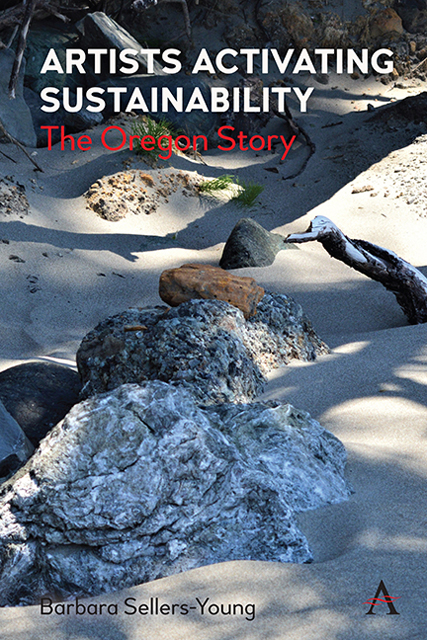Book contents
- Frontmatter
- Dedication
- Contents
- Acknowledgments
- List of Figures
- Introduction: Art, Environment and Metaphor
- 1 Environmental Activism, Arts and the Land of Eden Landscape One: High Desert Basin and Range
- Landscape One High Desert Basin and Range
- Landscape Two Columbia Gorge and Plateau
- Landscape Three Cascade Range
- Landscape Four The Willamette Valley
- Landscape Five Rogue River Valley
- Landscape Six Oregon Coast and Coast Range
- Index
Landscape Two - Columbia Gorge and Plateau
Published online by Cambridge University Press: 10 January 2023
- Frontmatter
- Dedication
- Contents
- Acknowledgments
- List of Figures
- Introduction: Art, Environment and Metaphor
- 1 Environmental Activism, Arts and the Land of Eden Landscape One: High Desert Basin and Range
- Landscape One High Desert Basin and Range
- Landscape Two Columbia Gorge and Plateau
- Landscape Three Cascade Range
- Landscape Four The Willamette Valley
- Landscape Five Rogue River Valley
- Landscape Six Oregon Coast and Coast Range
- Index
Summary
Landscape
The Columbia River Gorge began evolving 12 to 17 million years ago at the same time as the Cascade Range was forming. The most dramatic changes in the Columbia River Gorge took place at the end of the last Ice Age when the Missoula Floods cut the steep walls that exist today and left layers of volcanic rock exposed. The Gorge is 7,993 feet deep. The Columbia River is 1,243 miles long with a drainage basin that extends into seven states in the United States as well as British Columbia. Sixty sizeable rivers or streams flow into the Columbia River. The largest is the Snake River in northeastern Oregon with a watershed of 108,000 square miles (Figure 7).
Situated south of the Columbia River Gorge, the Columbia Plateau is a consequence of extensive lava flows. Seventeen million years ago a rising jet of lava, referred to as the Yellowstone hot spot, traversed five miles underground and sent lava flowing from a series of 10 to 25-mile-long fissures in northeastern Oregon. “Lava flooded from the cracks and spread out across the landscape burying forests, filling streams and forming dams that in turn caused impoundments or lakes much like cake icing fills the imperfections of a surface.” Other fissures and related lava flows continued for more than a million years and traveled 400 miles along the Columbia River from eastern Oregon to the coast. The sea stacks of Oregon's northern beaches are the remnant of the Columbia River basalt flows.
A variety of wetlands, such as potholes, marshes and meadows, are found throughout the Columbia Plateau. A crust of blue-green algae, lichens and mosses protects and enriches the soil. Aromatic shrubs such as sagebrush and bitterbrush offer good browsing to a wide range of wildlife from Sage Grouse and Pygmy Rabbits to Mule Deer and Rocky Mountain Elk. Forests of Ponderosa pine and Douglas-fir grow from the foothills of the Columbia Plateau to the surrounding mountain ranges. Extending from the Columbia Plateau are the Blue Mountains of northeastern Oregon. They are made up of several mountain ranges including the Ochoco and Maury Mountains, the Greenhorn Range, the Strawberry Mountains and the Wallowa Mountains.
- Type
- Chapter
- Information
- Artists Activating SustainabilityThe Oregon Story, pp. 73 - 78Publisher: Anthem PressPrint publication year: 2022

